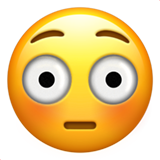Dynamic Planet B/C
Posted: September 5th, 2017, 3:26 pm
Welcome to the 2018 Dynamic Planet B/C Question Marathon!
On average, how thick is oceanic crust?
On average, how thick is oceanic crust?
On average, how thick is oceanic crust?
Around 100 km
It's the Hide function. Use it likeSully0413 wrote: I don't know how to do the white box thing because when I spoiler it it just blacks out. Sorry
Code: Select all
[hide] bolded title | hidden stuff [/hide]hidden stuff
Sully0413 wrote:On average, how thick is oceanic crust?Thanks Appleshake123!Around 100 km
4 km (6 mi)
Name and describe three ways that magma's composition can be changed
Sully0413 wrote:Oh. I read that as oceanic lithosphere. That's embarrassing.
Name and describe three ways that magma's composition can be changed
Two different magmas combine into one, trace elements hidden within rocks that have melted to lava, and partial melting that varies by degree... right?
OrigamiPlanet wrote:I'll try to bring this one back up again with some questions.
1) Define slab pull
2) In partial melting, ______ and ______ crust are involved in a ________ plate bondary. Fill in the blanks, the first two are asking what types of plates, like continental and continental.
3) Give two pieces of evidence to Wegener's theory.
4) A follow up to 3, name his theory and explain why it was initially rejected.
5) Which of the following are the first and second most common rock in oceanic crust? List both letters in the order of most common rock first, then second most common rock second.
a) Diorite
b) Basalt
c) Shale
d) Breccia
e) Granite
f) Not listed above
1) Slab pull- force caused by the sinking of lithosphere into asthenosphere at destructive margin; hypothesized to be one of the two major driving forces for the movement of plates 2) oceanic, oceanic, divergent 3) 1. fossils of the same species found across different continents, but the species are known to have been incapable of travelling that far 2. continents appear to fit together 4) Theory of Plate Tectonics; lacking proof 5) b. , c.
For 5, the second one isn't listed, it should be gabbro, but everything else looks right!Knyte_Xjn wrote:OrigamiPlanet wrote:I'll try to bring this one back up again with some questions.
1) Define slab pull
2) In partial melting, ______ and ______ crust are involved in a ________ plate bondary. Fill in the blanks, the first two are asking what types of plates, like continental and continental.
3) Give two pieces of evidence to Wegener's theory.
4) A follow up to 3, name his theory and explain why it was initially rejected.
5) Which of the following are the first and second most common rock in oceanic crust? List both letters in the order of most common rock first, then second most common rock second.
a) Diorite
b) Basalt
c) Shale
d) Breccia
e) Granite
f) Not listed above1) Slab pull- force caused by the sinking of lithosphere into asthenosphere at destructive margin; hypothesized to be one of the two major driving forces for the movement of plates 2) oceanic, oceanic, divergent 3) 1. fossils of the same species found across different continents, but the species are known to have been incapable of travelling that far 2. continents appear to fit together 4) Theory of Plate Tectonics; lacking proof 5) b. , c.